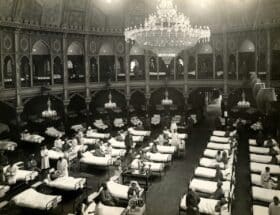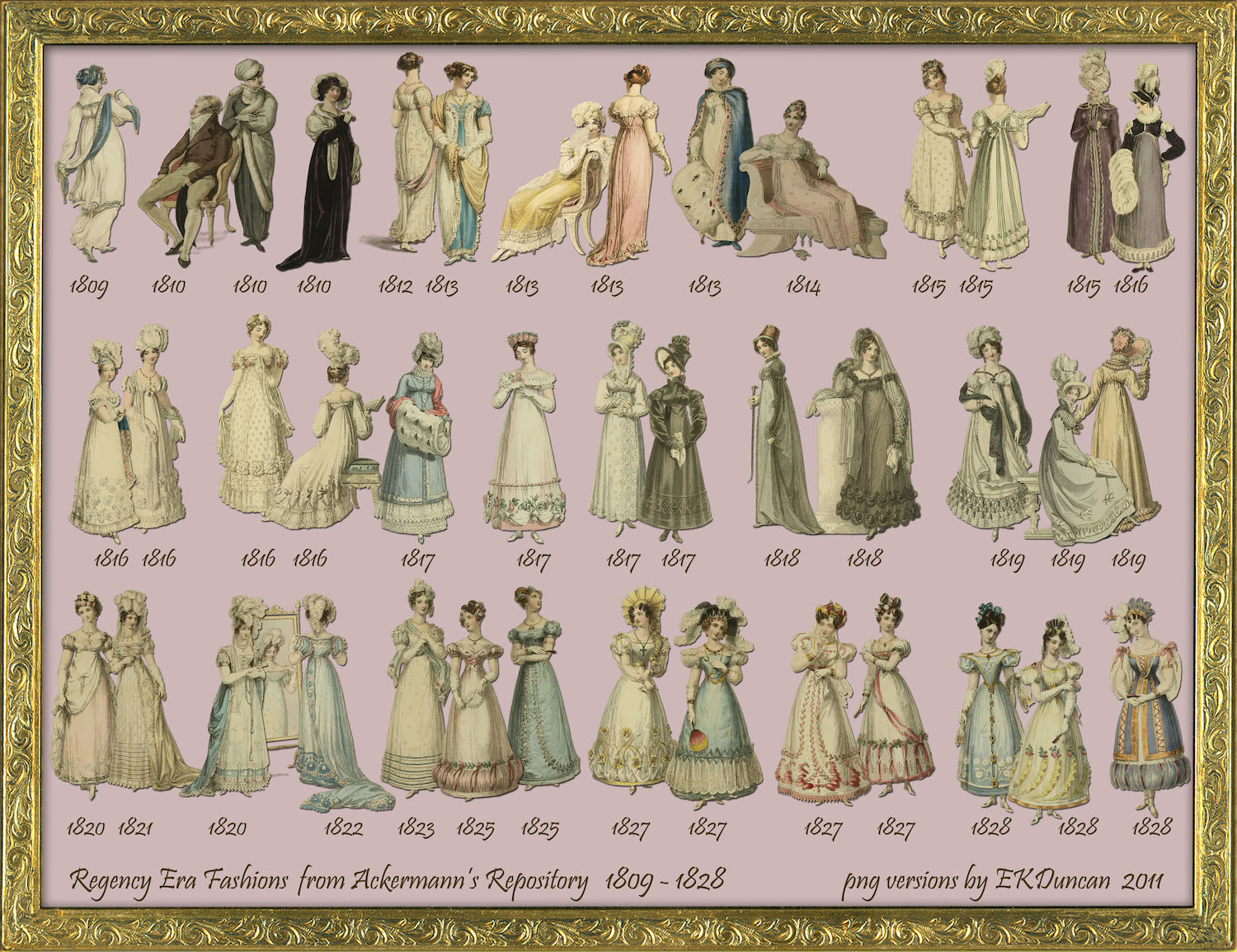By Pauline Weston Thomas for Fashion-Era.com
This fashion image far right captures so much of the 1974 fashion era.
The jacket is short and bomber jacket style with a tab front waistband. The sleeves are cuffed and the jacket is worn with an open-neck shirt. The trousers are fully flared and were called flares. The whole look screams the mid-1970s in general and the year 1974 in particular. Both emerald and bottle green were popular colors of the 1970s along with rust, wine red, purple, orange, and brown.
In the 1974 skirt image, you can see how complex the fashionable collar had become and how boots were an essential way to wear an outfit.
In this fashion history image, the boots have been teamed with what became a mass fashion - a cut on the cross diagonal check A-line above the knee skirt probably made up in Courtelle jersey knit fabric or Terylene.
1970s Fashion History - Fashion Designs from 1974
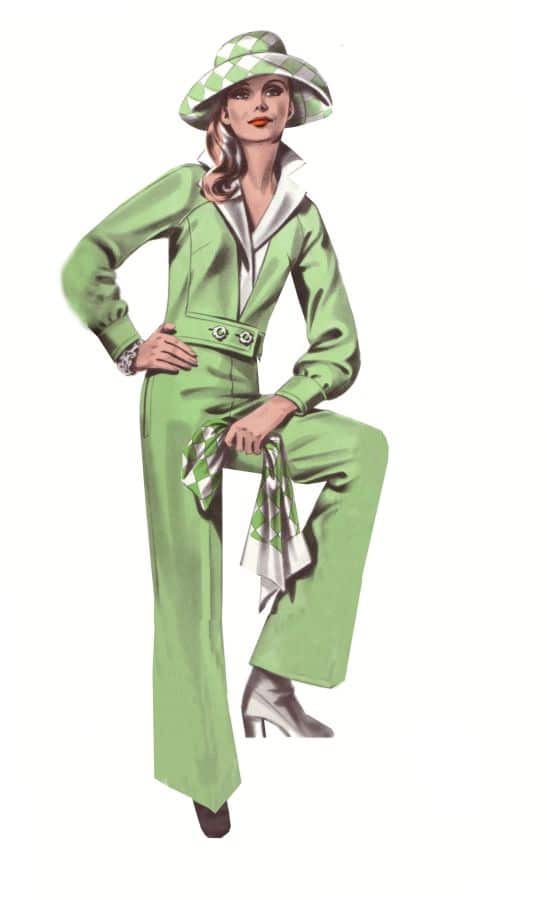
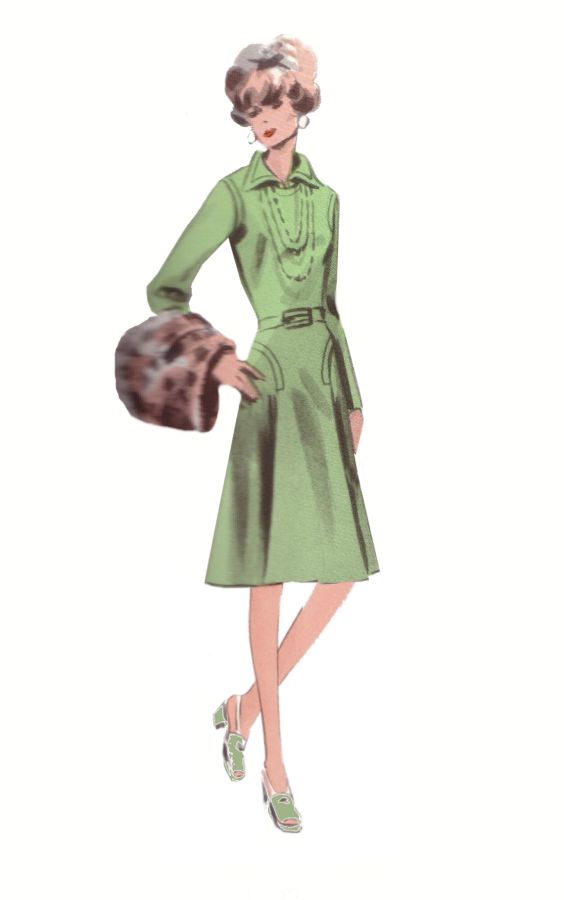
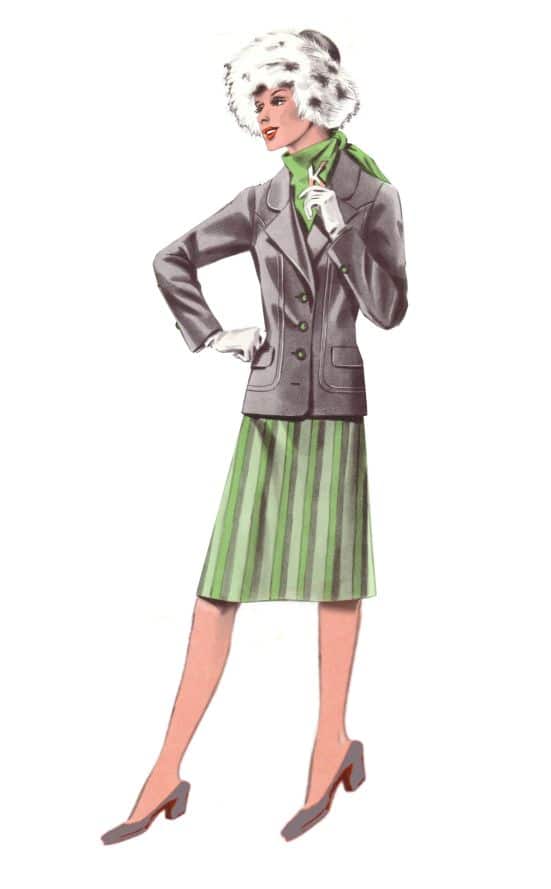
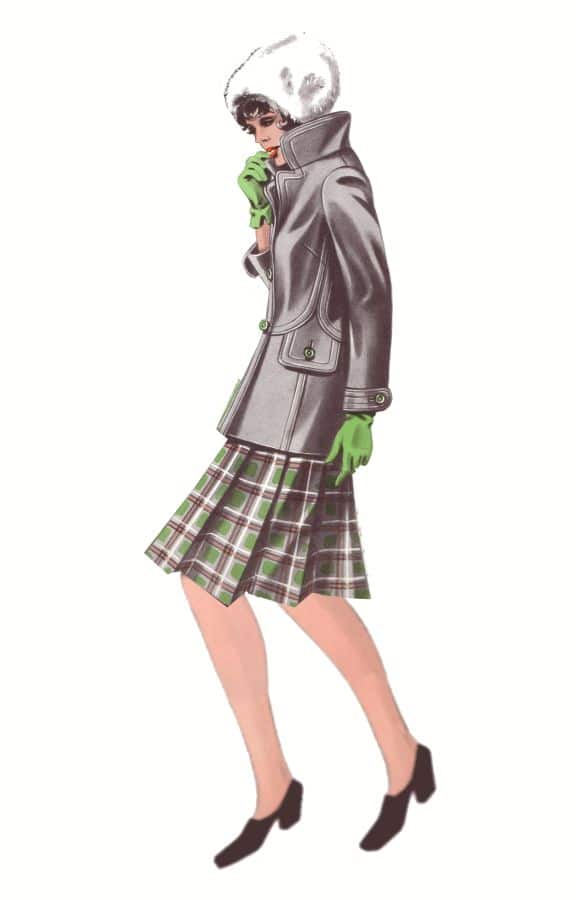
The first two images left above show the use of a banded bomber jacket, a short jacket style in fashion around 1974. The green trouser suit has full flared trousers and the pink suit a flared skirt with side pleats.
The white panel princess line dress with inverted kick pleats and the tie jabot at the neck is also very representative of an everyday work dress of the 1970s fashion era. Other alternatives to this simple jabot were ruffle jabots or large flat artist contrast fabric bows set between a flat white detachable Peter Pan collar. White contrast cuffs were a common feature of late sixties and early seventies clothes.
The fitted polo neck stand neckline sweater on the far right was also a fashionable collar/neckline of the seventies. The grey skirt was set on a hip yoke and the yoke formed a faced waistline which meant a sweater skinny rib knit or silky top sat neatly inside the skirt.
Waistbands on skirts had all but disappeared from many skirt styles when hipster skirts arrived in the sixties. Regular waistbands reappeared when straight pencil skirts made a return around 1978/79 and a firmer waistband was required.
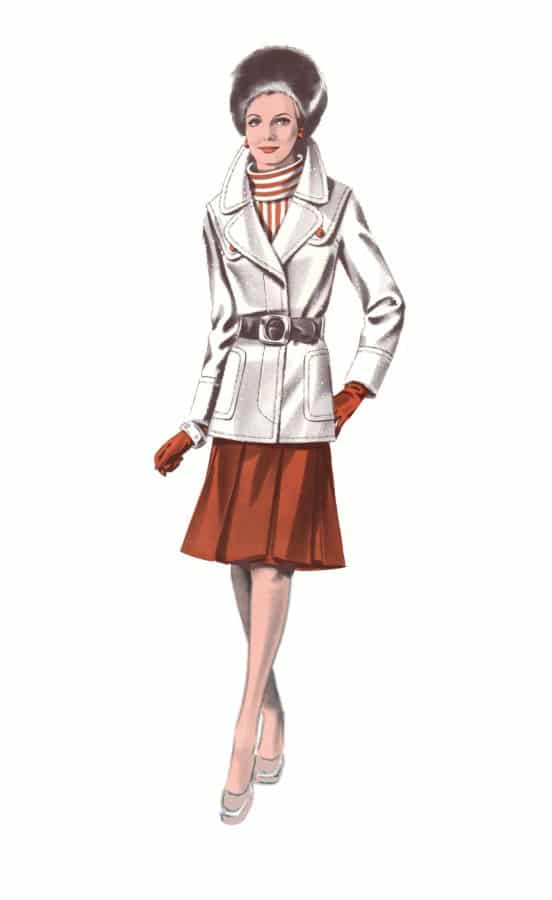
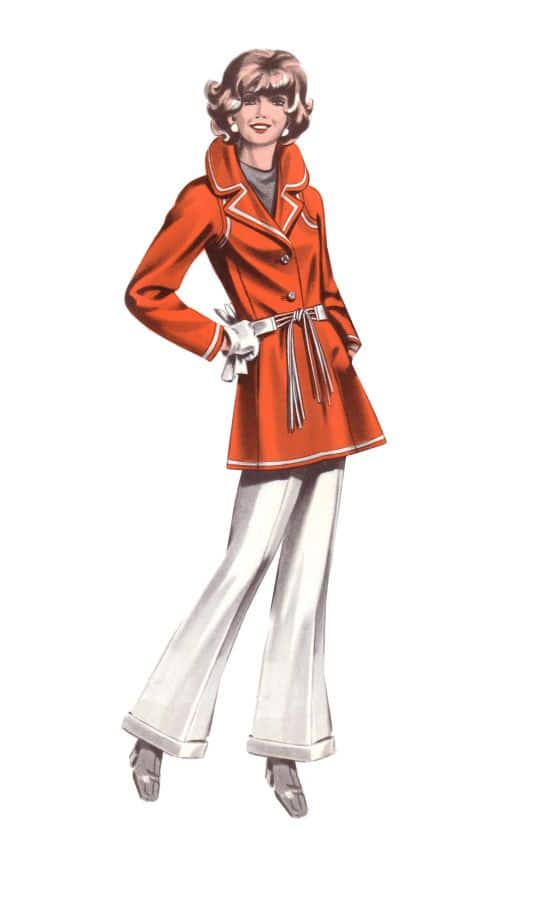
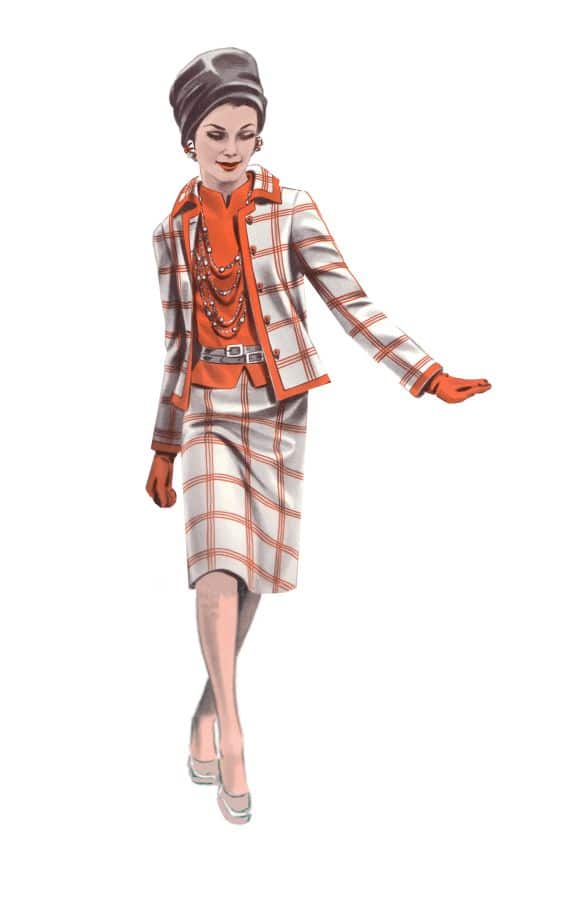
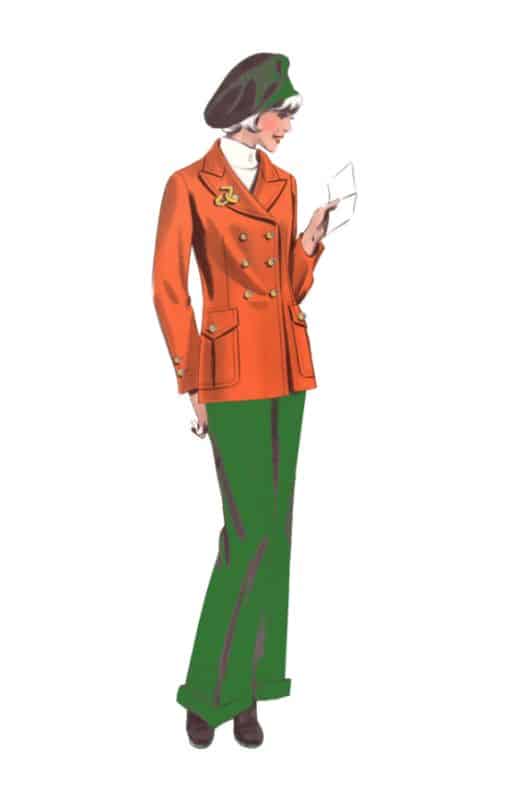
The seventies flared trousers above both have turn-ups. Flares were worn with or without turn-up hems. Trousers were often worn with tucked-in skinny rib sweaters or lean-darted shirts. Lean-fitted body-hugging shirts are a mark of seventies style.
Fuller bloused shirts are much more eighties. Tie belts, safari or double-breasted reefer style, or denim jackets were used as toppers. Variations of the safari jacket continued in fashion long after it was first shown by Yves St. Laurent in 1968.
All the jackets have oversized collars which were almost always top stitched about 1cm from the fabric's outer edge. Often they were double top stitched as the bulky synthetic fabrics used were often so bouncy it was the only way to get a good flat finish. In fact, top stitching began to look very seventies on any garments in the eighties when flusher smoother lines or invisible finishes were more predominant on garment edge facings.
Flares were made from many fabrics including the then fairly new fabric called Trevira a form of woven polyester. Some trousers were made from fabrics like Crimplene and others in more expensive ranges from materials such as wool crepe or satin back crepe.
The pictures above reflect popular everyday mid-1970s dress. The flared skirt uses diagonal cut plaid or check fabric. This skirt style had mass popularity and was probably worn shorter than shown here depending on the age of the wearer.
The easy A-line dress with pleats, collar, and tie trim would have been very suitable under a velvet or denim blazer as well as this easy coat which you may note has cuffs. Many jackets and coats of the era had blousing in the sleeves and were finished with cuffs.
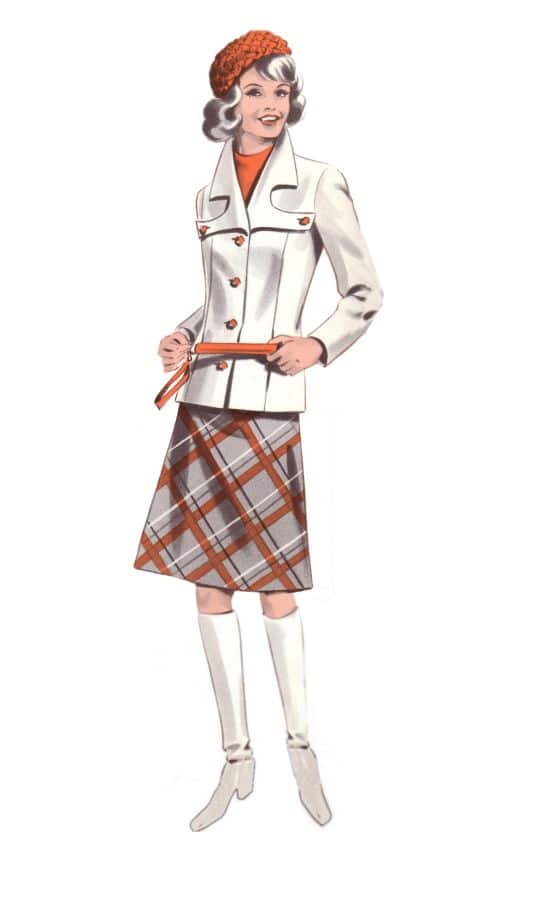
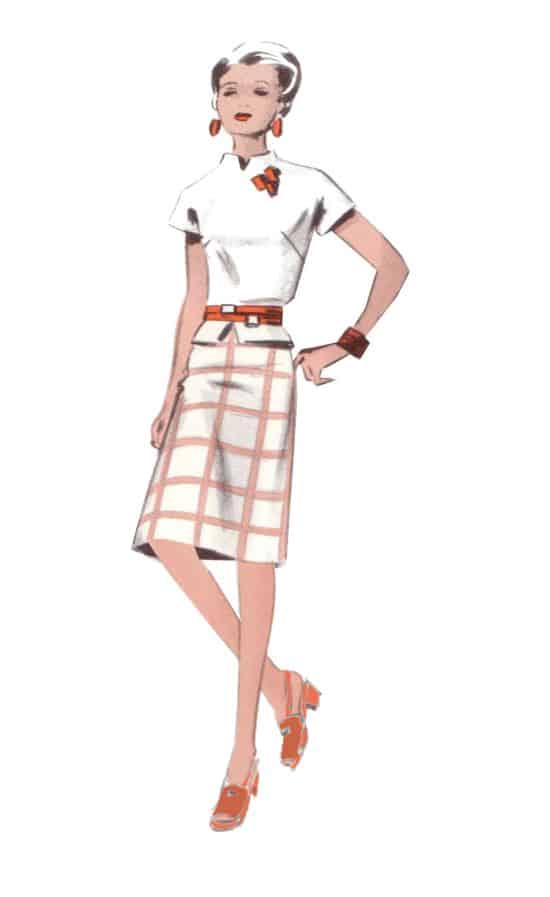
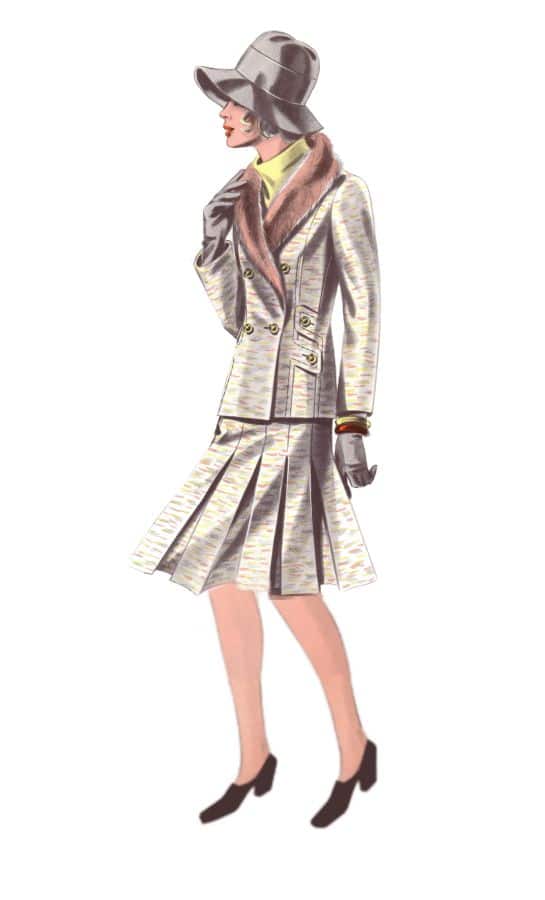
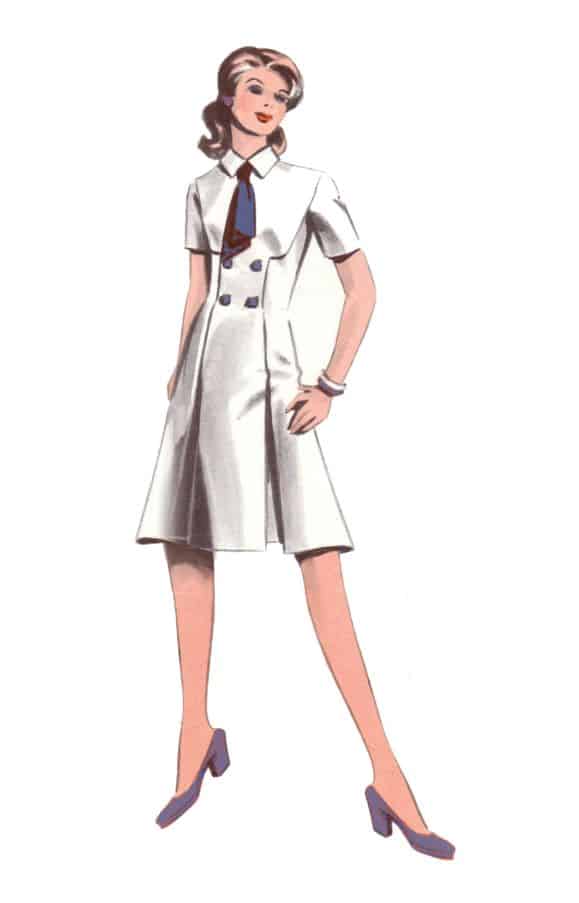
In 1970s fashion history terms, in the four images above you can see how the skirt throughout the 1970s is always slightly flared with some A-line in evidence and never pencil straight. It was not until 1979 that skirts universally became pencil-straight again.
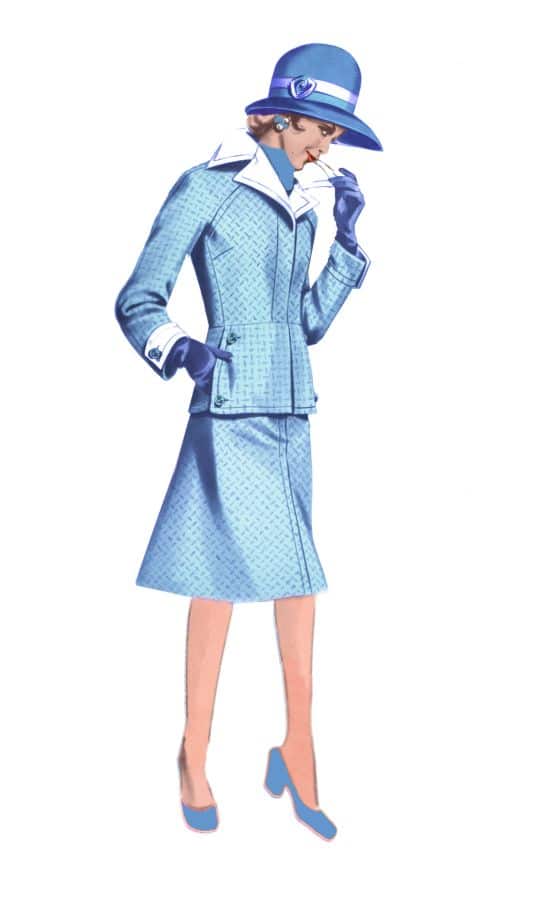
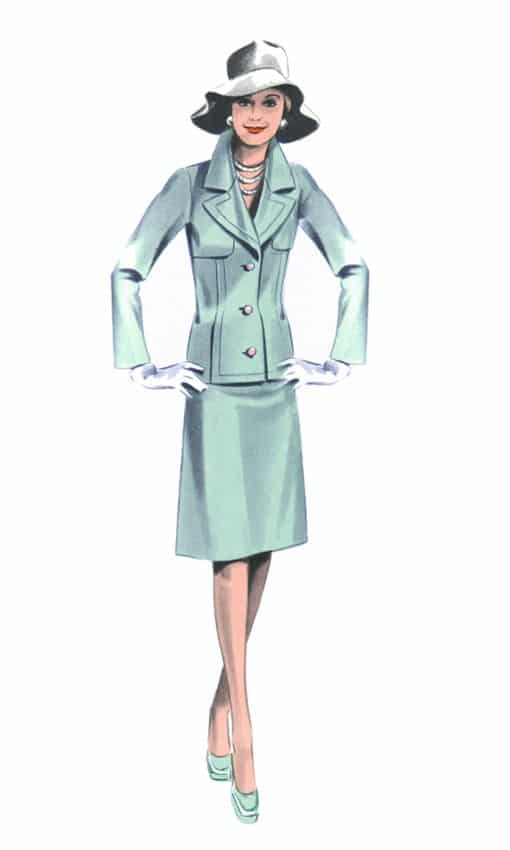
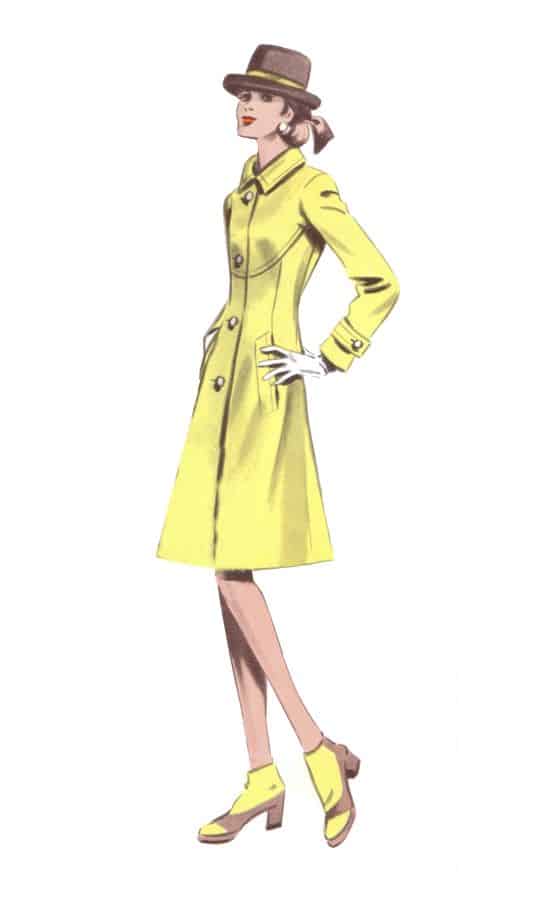
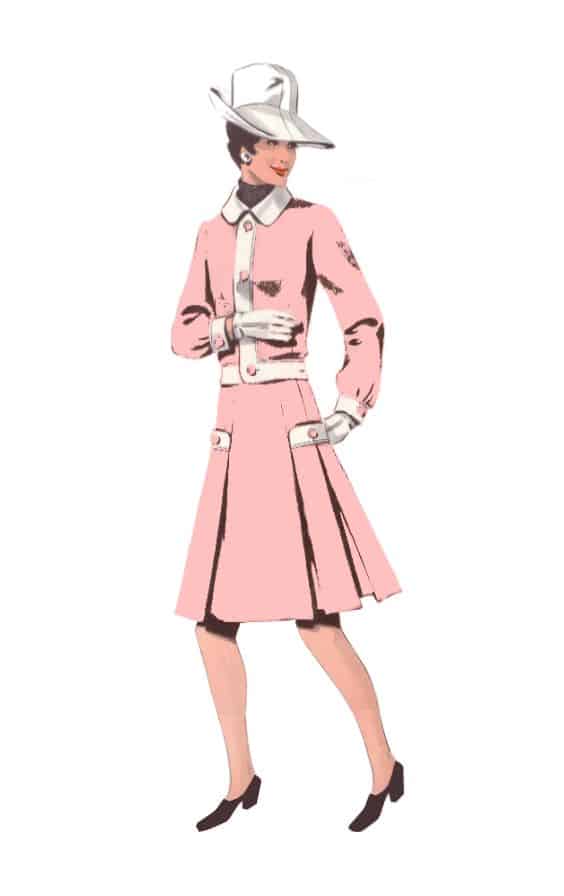
Skirts were quite full during 1974 and many were cut on a circle pattern or from panels which gave added circular swing fullness. Coats always had some trapeze line swing, even slim-fitting coats such as the yellow coat above had A-line flare and very few 1970s coats were straight apart from reversible wool coats.
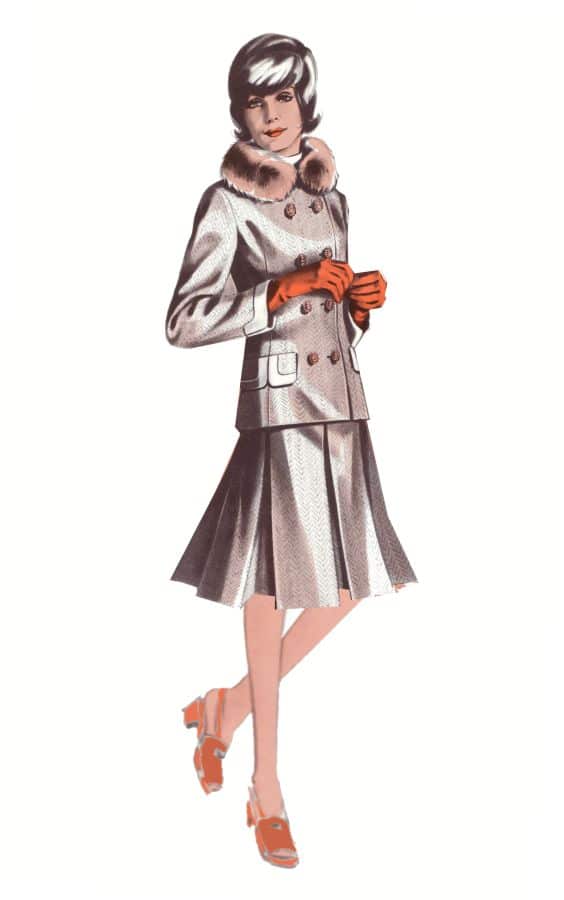
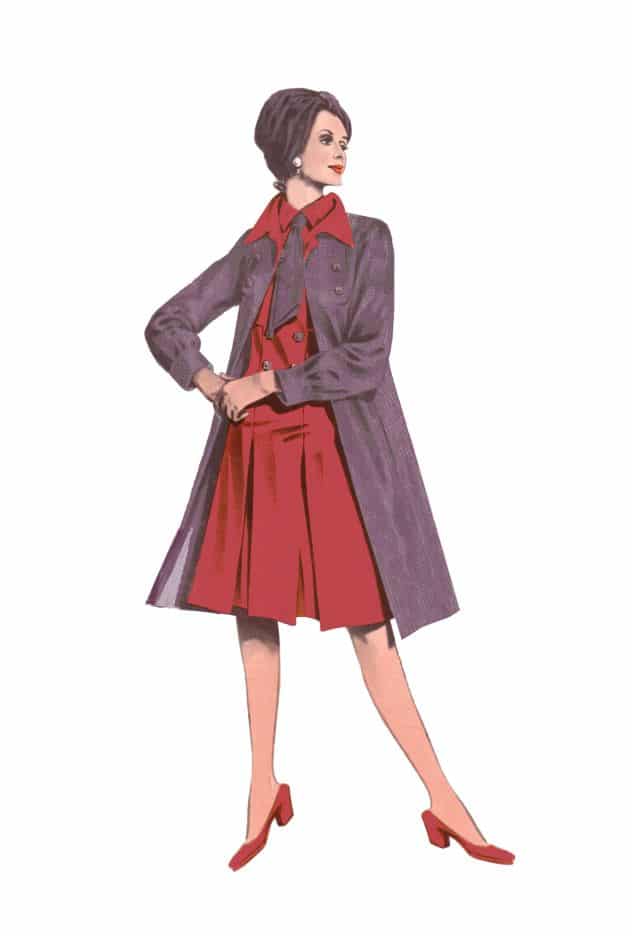
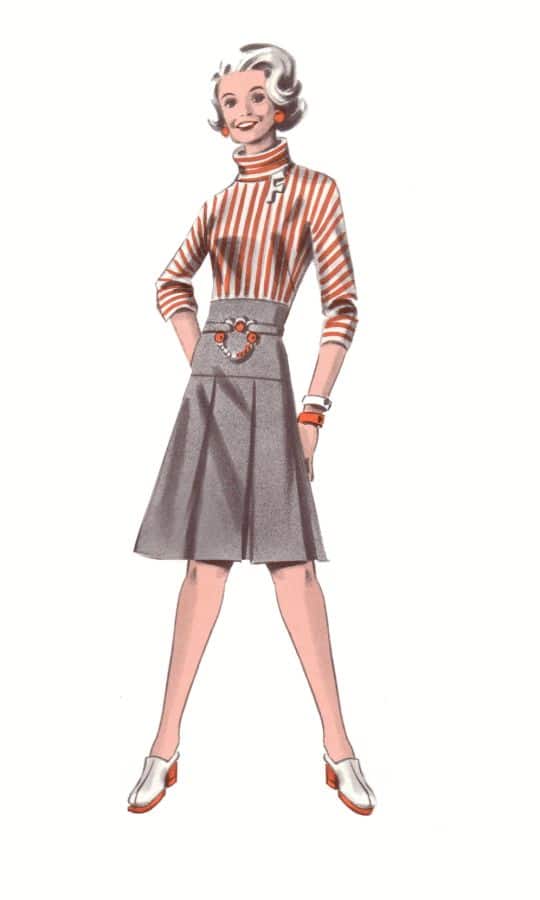
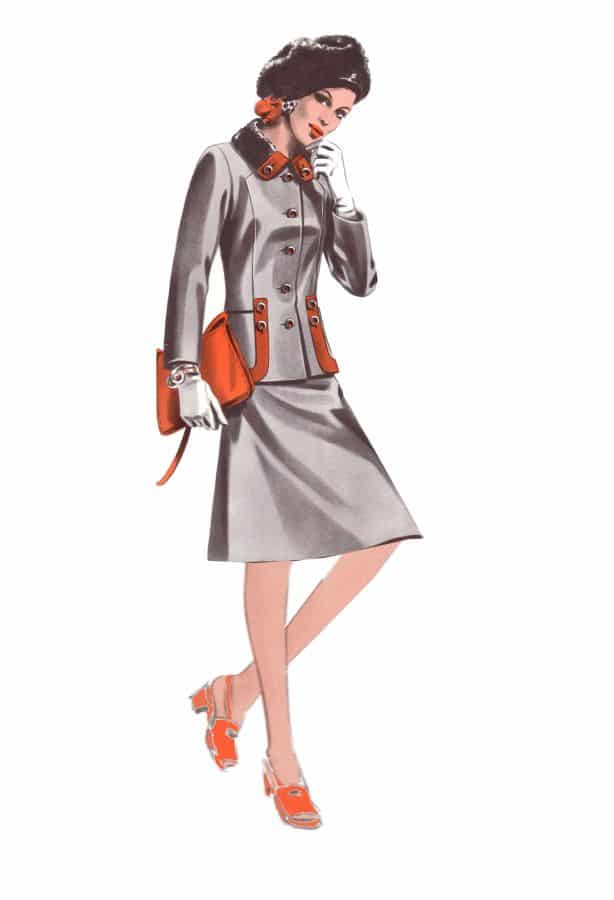
Other alternative skirt styles included box pleat skirts worn on or above the knee. Paying attention to the collar was important throughout the 1970s and shaped collars and fur collars were the essence of the fashion era.

